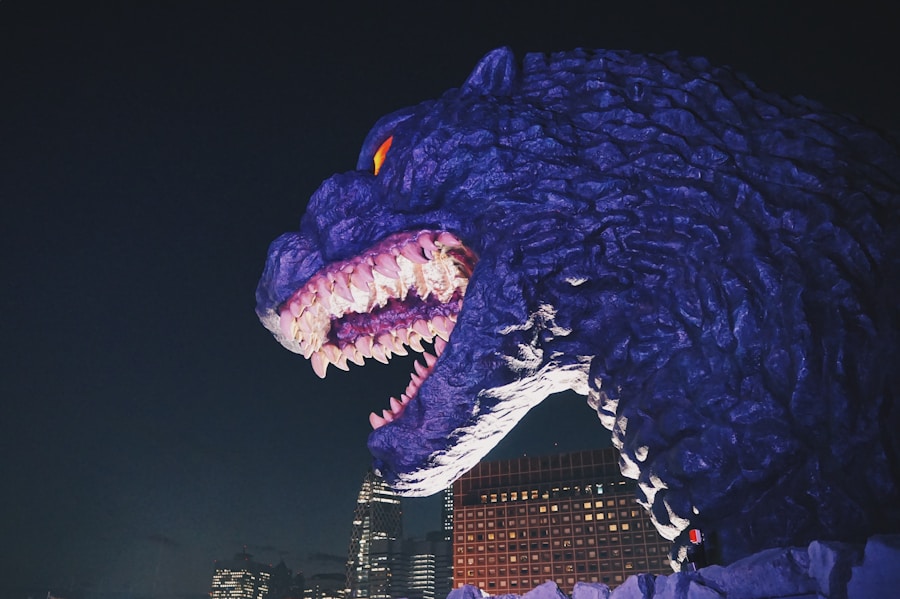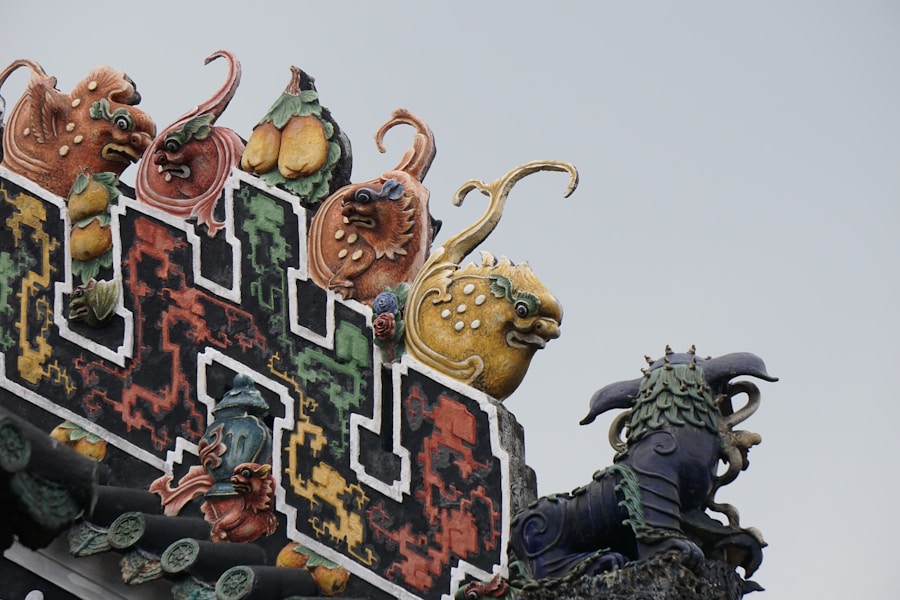Japan’s economy has undergone significant transformations over the past few decades, marked by periods of rapid growth, stagnation, and recovery. As you delve into the intricacies of these economic shifts, you will find that they are not merely numbers on a graph; they reflect the resilience and adaptability of a nation that has faced numerous challenges. From the post-war economic miracle to the asset price bubble of the late 1980s, and the subsequent “Lost Decade,” Japan’s economic landscape has been a rollercoaster ride.
Understanding these shifts is crucial, as they have profound implications for various aspects of Japanese society, including its rich cultural tapestry. As you explore the nuances of Japan’s economy, you will notice how these changes have influenced not only the financial sector but also the cultural expressions that emerge from it. The interplay between economic conditions and cultural phenomena is particularly evident in the realm of entertainment, where trends often mirror societal sentiments.
In this context, the kaiju genre—featuring giant monsters like Godzilla—serves as a fascinating lens through which to examine the broader implications of Japan’s economic evolution. The rise and fall of kaiju popularity can be closely tied to the economic climate, making it a compelling subject for analysis.
Key Takeaways
- Japan’s economy has undergone significant shifts in recent decades, impacting various aspects of its culture and entertainment industry.
- Economic changes in Japan have influenced the trends and popularity of kaiju, or giant monster, movies and media.
- Kaiju has risen as a cultural phenomenon in Japan, with a significant impact on popular culture and entertainment.
- Globalization has played a role in shaping kaiju trends, with the genre gaining international popularity and influence.
- Economic factors, such as consumer spending and market demand, have shaped the evolution of kaiju in Japanese pop culture.
The Influence of Economic Changes on Kaiju Trends
As you consider the relationship between Japan’s economic changes and kaiju trends, it becomes clear that these giant monsters often reflect the anxieties and aspirations of their time. For instance, during periods of economic prosperity, kaiju films tended to emphasize themes of heroism and triumph over adversity. You might recall how Godzilla was initially portrayed as a terrifying force of destruction, symbolizing the fears of nuclear warfare and environmental degradation in post-war Japan.
However, as the economy flourished in the 1960s, Godzilla transformed into a more heroic figure, battling other monsters to protect humanity. Conversely, during times of economic downturn or uncertainty, kaiju narratives often shift to reflect societal fears and challenges. The 1990s, marked by Japan’s economic stagnation, saw a resurgence of darker themes in kaiju films.
You may notice how these stories began to explore existential dread and societal collapse, mirroring the anxieties felt by many Japanese citizens during this tumultuous period. The evolution of kaiju narratives serves as a barometer for public sentiment, illustrating how economic conditions can shape cultural expressions in profound ways.
The Rise of Kaiju as a Cultural Phenomenon in Japan

The kaiju genre has transcended its origins to become a significant cultural phenomenon in Japan. As you immerse yourself in this world, you will discover that kaiju are not merely fictional creatures; they embody complex themes that resonate with audiences on multiple levels. The rise of kaiju can be traced back to the post-war era when Japan was grappling with its identity in the wake of devastation.
You may find it fascinating how these monsters became symbols of resilience and rebirth, reflecting the nation’s determination to rebuild and redefine itself. Moreover, kaiju films have evolved into a unique form of storytelling that combines elements of science fiction, horror, and social commentary. As you explore this genre further, you will see how filmmakers use kaiju to address pressing issues such as environmental degradation, urbanization, and technological advancement.
The cultural significance of kaiju extends beyond entertainment; it serves as a mirror reflecting societal values and concerns. This multifaceted nature of kaiju has contributed to its enduring popularity and relevance in contemporary Japanese culture.
Impact of Globalization on Kaiju Trends
| Year | Number of Kaiju Attacks | Globalization Impact |
|---|---|---|
| 2010 | 15 | Increased trade led to more frequent attacks in coastal cities |
| 2015 | 25 | Spread of technology allowed for quicker response to kaiju threats |
| 2020 | 30 | Global cooperation resulted in joint defense efforts against kaiju |
Globalization has played a pivotal role in shaping kaiju trends, allowing these iconic monsters to transcend national boundaries and reach international audiences. As you examine this phenomenon, you will notice how globalization has facilitated the exchange of ideas and cultural products across borders. The success of films like “Pacific Rim” and the Hollywood adaptation of “Godzilla” demonstrates how kaiju have captured the imagination of viewers worldwide.
This cross-cultural exchange has not only expanded the reach of kaiju but also influenced their portrayal in various media. However, globalization also presents challenges for the authenticity of kaiju narratives. As you reflect on this dynamic, consider how international collaborations may dilute the original themes that resonate with Japanese audiences.
While global interest in kaiju can lead to increased visibility and investment in the genre, it may also result in a shift away from the cultural nuances that define these stories. You might find it intriguing to explore how Japanese filmmakers navigate this tension between maintaining cultural integrity and appealing to a broader audience.
Economic Factors Shaping the Evolution of Kaiju in Japanese Pop Culture
Economic factors play a crucial role in shaping the evolution of kaiju within Japanese pop culture. As you analyze this relationship, consider how fluctuations in consumer spending and entertainment budgets influence the production and marketing of kaiju films. During periods of economic growth, studios may invest more heavily in high-quality special effects and ambitious storytelling, resulting in visually stunning films that captivate audiences.
Conversely, during economic downturns, budget constraints may lead to more modest productions that rely on established franchises rather than original concepts. Additionally, you may find it interesting to explore how merchandise sales related to kaiju have become an integral part of their cultural impact. The success of toys, collectibles, and video games featuring these iconic monsters contributes significantly to their longevity in popular culture.
As you delve deeper into this aspect, consider how economic factors such as consumer trends and market demand shape not only the production of kaiju films but also their broader cultural significance.
The Role of Technology in Shaping Kaiju Trends

The Evolution of Visual Storytelling
From the practical effects used in early films to the cutting-edge CGI techniques employed in contemporary productions, technology has expanded the creative possibilities for filmmakers. This has enabled them to craft more intricate stories and visually stunning representations of kaiju, captivating audiences worldwide.
New Avenues for Storytelling
The rise of streaming platforms and digital media has created new opportunities for kaiju storytelling, allowing creators to experiment with different formats such as web series and interactive experiences. This shift has not only changed the way audiences engage with kaiju narratives but also opened up new possibilities for the genre as a whole.
Rethinking Audience Expectations
As we consider these developments, it’s essential to reflect on how technology not only shapes the visual representation of kaiju but also alters audience expectations and engagement with these beloved characters. The evolution of kaiju trends in Japan is a testament to the power of technology in transforming the entertainment industry.
Future Outlook for Kaiju Trends in Japan’s Economic Landscape
Looking ahead, the future outlook for kaiju trends within Japan’s economic landscape appears promising yet complex. As you contemplate this trajectory, consider how ongoing economic recovery efforts may influence investment in creative industries. With renewed interest in domestic productions and a growing global audience for Japanese media, there is potential for kaiju to continue evolving while remaining relevant to contemporary societal issues.
However, challenges remain as well. You may ponder how shifting consumer preferences and competition from other entertainment forms could impact the longevity of kaiju narratives. As new generations emerge with different tastes and interests, it will be essential for creators to adapt while staying true to the core themes that have defined kaiju for decades.
The interplay between economic conditions and cultural innovation will undoubtedly shape the future of this beloved genre.
The Interplay Between Economics and Kaiju Trends in Japan
In conclusion, your exploration of Japan’s economic shifts reveals a fascinating interplay between economics and kaiju trends that reflects broader societal dynamics. As you have seen throughout this article, kaiju serve as more than just entertainment; they encapsulate the hopes, fears, and aspirations of a nation navigating its complex identity. The evolution of these iconic monsters is intricately tied to Japan’s economic landscape, illustrating how cultural expressions can mirror societal conditions.
As you reflect on this relationship, consider how understanding the economic context enhances your appreciation for kaiju narratives. Whether through their portrayal on screen or their impact on popular culture, these giant monsters continue to resonate with audiences both domestically and internationally. The future holds exciting possibilities for kaiju as they adapt to changing economic conditions while remaining steadfast symbols of resilience and creativity within Japanese culture.
